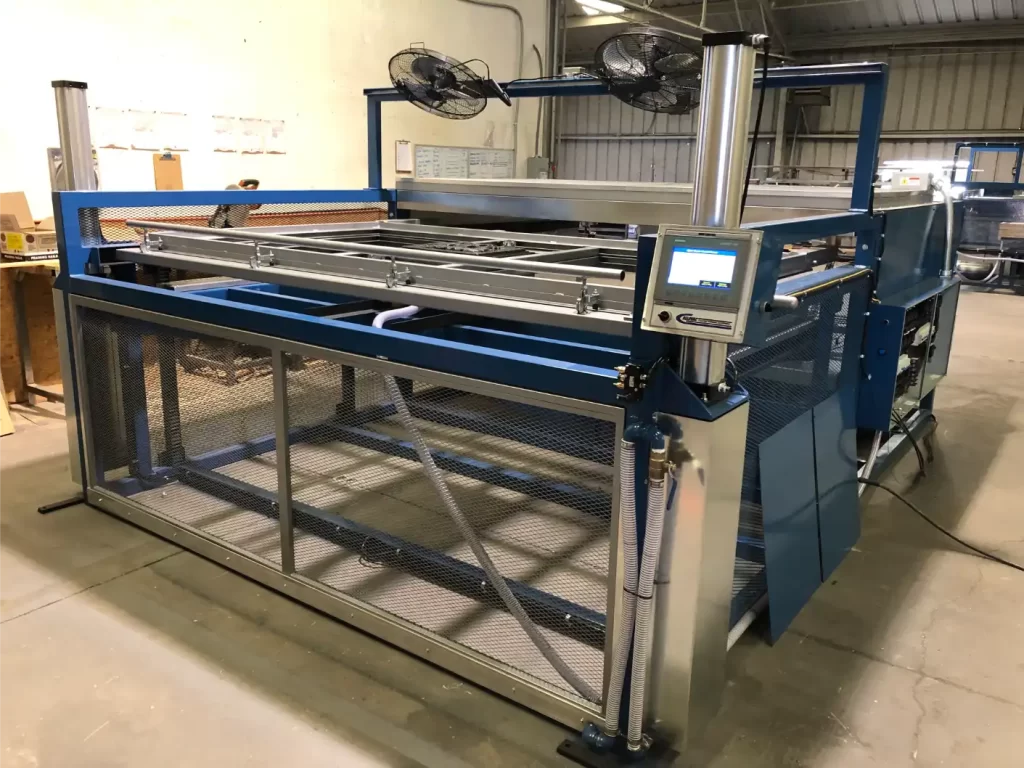Thermoforming plays a key role in modern manufacturing, enabling the creation of lightweight, high-quality components at an economical cost. This versatile process involves heating thermoplastic sheets until pliable, then shaping them into precise forms using vacuum, pressure, or mechanical forces. Its significance is particularly pronounced in the automotive and aerospace sectors, where performance, durability, and efficiency are paramount.
How Thermoforming Works
Thermoforming starts by heating a thermoplastic sheet to its softening point. Once heated, the material is pressed onto or into a mold, adopting its shape through vacuum or pressure. After cooling, the component is trimmed and finished, ready for use. This process is divided into two main types:
- Heavy-Gauge Thermoforming: Used for durable and structural components, such as vehicle body panels and aerospace fairings.
- Light-Gauge Thermoforming: Focuses on thin, intricate parts like interior trims and protective packaging.
Applications of Thermoforming in Automotive Manufacturing
Thermoforming has transformed automotive manufacturing by providing a cost-effective method to produce lightweight, durable, and versatile components. This innovative process plays a key role in creating intricate designs for functional and decorative parts, helping manufacturers meet stringent industry standards while improving vehicle performance, fuel efficiency, and aesthetics.
Revolutionizing Automotive Machinery
Thermoforming plays an essential role in producing lightweight, durable automotive components that balance performance and efficiency. By utilizing thermoplastic materials, manufacturers achieve a high strength-to-weight ratio and robust designs.
- Exterior Components: Produces aerodynamic parts like bumpers, hoods, fenders, and spoilers, improving vehicle efficiency, safety, and design flexibility.
- Interior Features: Creates dashboards, door panels, and center consoles with precise, lightweight designs that enhance aesthetics, functionality, and noise reduction.
- Protective Elements: Produces mud flaps, wind deflectors, and bumper guards that shield vehicles from debris, weather, and minor impacts.
Thermoforming reduces material waste and tooling costs, making it a sustainable and cost-effective choice for modern automotive manufacturing.
Automotive Vacuum Forming for Plastic Trim
Vacuum forming is ideal for producing precise, lightweight, and visually appealing plastic trims for vehicles. This process heats thermoplastic sheets to a pliable state, forming them onto molds using vacuum pressure. Key applications include:
- Dashboard Trims: Seamlessly fitted with smooth finishes to enhance cabin aesthetics.
- Door Panels and Inserts: Features textured designs, ergonomic shapes, and customizable colors.
- Exterior Accents: Durable decorative trims, including chrome-like finishes and body accents, withstand harsh conditions.
Vacuum forming combines strength with design flexibility, reducing production time, tooling costs, and material waste. It is a preferred method for high-quality, cost-effective trim manufacturing.
Thermoforming’s Impact on Automotive Design
Thermoforming drives the industry’s efforts to create lightweight components, which in turn reduces vehicle weight to improve fuel efficiency, cut emissions, and support electric and hybrid technologies. Its use of recyclable plastics aligns with sustainability goals, enabling eco-friendly designs that meet regulatory and consumer demands. By producing complex, high-performance components efficiently, thermoforming ensures automotive manufacturing remains innovative and environmentally responsible.
Applications of Thermoforming in Aerospace Manufacturing
Thermoforming plays a vital role in aerospace manufacturing by enabling the production of lightweight, durable, and cost-effective components. Below is a breakdown of key applications:
| Application | Examples | Benefits |
|---|---|---|
| Cabin Interiors | Seat backs, Tray tables, Storage compartments | Reduces overall weight for fuel efficiency, Enhances passenger comfort and safety |
| Aerodynamic Panels and Fairings | Exterior fairings, Panels and covers | Improves aerodynamic performance, Withstands extreme conditions |
| Protective Packaging | Custom trays and containers, ESD-protected packaging | Ensures safe transport of sensitive equipment, Protects against static and impact damage |
Why Thermoforming Excels in Aerospace
Thermoforming stands out as a reliable manufacturing process in the aerospace industry, addressing the need for precision, lightweight construction, and cost control. Its versatility and adaptability make it an ideal solution for producing components that meet the sector’s stringent requirements. Here are the key reasons why thermoforming is vital in aerospace manufacturing:
Here are the key reasons why thermoforming is vital in aerospace manufacturing:
- Lightweight designs improve fuel efficiency and increase payload capacity.
- Produces strong components without compromising structural integrity.
- Low tooling costs reduce initial investment.
- Scales efficiently for both small and large production runs.
- Supports intricate designs and complex geometries.
- Adapts easily for custom components like fairings and packaging.
- Meets strict safety and regulatory standards.
- Uses certified materials resistant to fire and extreme conditions.
Thermoforming’s ability to balance performance, cost, and compliance ensures it remains a cornerstone of aerospace manufacturing.
Advantages of Thermoforming in Manufacturing
Thermoforming is a vital process in automotive and aerospace manufacturing, valued for its efficiency, versatility, and ability to create lightweight, durable components. Its use of thermoplastics ensures cost-effective production while supporting sustainability and intricate designs.
The table below highlights the unique benefits of thermoforming and how it addresses the specific needs of these industries:
| Feature | Benefits |
|---|---|
| Cost Efficiency | Lower tooling and setup costs compared to injection molding or machining. |
| Lightweight Components | Critical for improving fuel efficiency in vehicles and aircraft. |
| Design Versatility | Enables the creation of complex shapes and custom designs. |
| Quick Prototyping | Speeds up product development cycles with reduced lead times. |
| Sustainability | Allows the use of recyclable materials, reducing environmental impact. |
Innovative Thermoforming Solutions by Belovac
For over 30 years, Belovac has been a trusted provider of vacuum forming and thermoforming equipment, offering solutions tailored to the automotive, aerospace, and other industries. Their product range includes:
- BV C-Class: Affordable machines ideal for businesses entering thermoforming production.
- BV E-Class: Advanced manual sheet-fed vacuum forming machines for precise applications.
- BV A-Class: Fully automated systems designed for high-volume, high-precision manufacturing.
- Industrial Drying Ovens: Ensures optimal plastic performance by removing residual moisture before forming.
Belovac’s machines combine innovative technology with robust engineering to meet diverse manufacturing needs. Whether you aim to enhance efficiency or expand your production capabilities, Belovac offers reliable solutions backed by decades of expertise.
Contact Belovac today to explore how their cutting-edge thermoforming equipment can revolutionize your manufacturing process!


